|
ABOUT GREEN NOTES
GreenNotes covers environmental news, programs and events from Hennepin County.
Please take a few moments to read our stories. Share your feedback and ideas for protecting the environment.
Get a link for sharing Green Notes in email and social media by checking out the archived issues.
Email Hennepin Environment
Please forward this email to interested individuals and encourage them to sign up.

|
 Hennepin County conducted a waste sort earlier this year to learn more about what residents are throwing away and what opportunities we are missing to recycle more.
The study involved sorting residential trash from Minneapolis into new categories to get better, more specific information about what could be recycled now but is not, and what opportunities need to be developed to increase recycling in the future.
|
The study identified the following opportunities to increase recycling and reduce waste:
-
Recycle organic waste: Recycling organic materials, which include food and compostable paper, is the biggest opportunity to reduce our trash. Organics make up about 25 percent of our trash, and not many people are participating in organics recycling programs yet.
-
Recycle more paper and cardboard: Residents are doing a pretty good job of recycling, but there are still opportunities to improve. The study found we could be recycling more paper and cardboard.
-
Use drop-off options: There are opportunities to improve recycling of materials that are not accepted in curbside recycling programs. Clothing can be brought to donation centers for reuse and recycling, plastic bags and film can be recycled at many grocery and retail stores, and there are drop-off options to recycle electronics, mattresses and scrap metal.
-
Focus on waste prevention: The study found that there’s still a lot of trash in the trash. Several materials in the top 10 list of items in the trash don’t have good reuse or recycling markets. This includes diapers, pet waste, non-recyclable plastic and paper, home improvement waste, and small items (those that are less than half an inch in size). Reducing the amount of waste generated is the first place is the most impactful waste management practice, and there is considerable potential to improve waste prevention.
Learn more by reading the factsheet about the results and opportunities, watching a video about the key findings and organics recycling, or accessing the full report.
For more information, contact Ben Knudson at ben.knudson@hennepin.us or 612-596-1176.
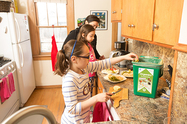 Recognizing that organics recycling is the greatest opportunity to reduce our trash, the county board recently adopted changes to the Hennepin County Residential Recycling Funding Policy to allocate more money to cities for organics recycling programs.
To support city recycling programs, Hennepin County distributes all of the funding that it receives from the state’s Select Committee on Recycling and the Environment (SCORE) fund to cities. The county distributed $3.5 million in 2016. Most of that funding went to residential recycling programs, with less than 10 percent allocated to organics recycling.
Organic waste, including food and compostable paper, makes up about one-quarter of residential trash. However, most households in the county currently do not have the opportunity to participate in organics recycling. So increasing organics recycling is the best opportunity to reduce waste and increase recycling.
The new funding policy gradually shifts more SCORE funds to organics recycling. In 2017, 20 percent of funding will be allocated to organics recycling programs. By 2020, half of the SCORE funding will be dedicated to supporting organics recycling.
For more information, contact Ben Knudson at ben.knudson@hennepin.us or 612-596-1176.
|
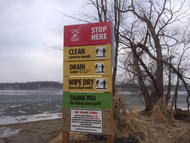 Local government agencies, nonprofit organizations, institutions and companies in Hennepin County can apply now for funding to implement projects that prevent the spread of aquatic invasive species (AIS).
Eligible project activities include:
|
- Assessing the risk of AIS introduction and the resources available to respond.
- Broadening knowledge and participation in early detection and rapid response.
- Preventing the spread of AIS.
- Researching and addressing specific pathways of introduction.
- Increasing enforcement resources.
- Increasing public awareness and participation in prevention.
Applications are due by January 20, 2016. Learn more and apply.
Past grant projects have increased education, enhanced early detection efforts, expanded inspections and supported research. See the 2016 accomplishments report for an update on the county’s AIS prevention efforts.
For more information, contact Tony Brough at tony.brough@hennepin.us or 612-348-4378.
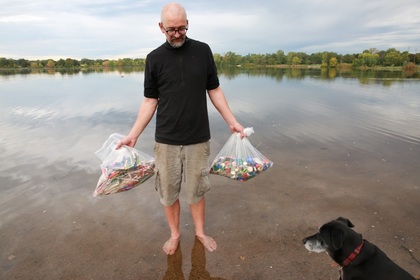
 A few years ago, art professor turned water quality activist Sean Connaughty grew increasingly concerned about the amount of trash ending up in his neighborhood lake – Lake Hiawatha. To demonstrate how litter from our streets flows directly into our lakes, Connaughty labeled a ping pong ball and sent it down his local rain gutter. Two weeks later, that same ping pong ball surfaced in Lake Hiawatha.
He has now collected more than 150 bags of garbage from the lake that includes everything from rubber duckies to pens to aerosol cans. This work has inspired him to organize his neighbors to take action by keeping trash, yard waste, dirt, salt and more out of their storm sewers.
Connaughty’s story is just one featured in the new Clean Water MN campaign. By celebrating water-friendly actions being taken by area residents, the campaign aims to educate people about water issues and inspire them to take action. This new campaign is an outreach program of the Metro Watershed Partners, to which Hennepin County belongs.
|
The Hennepin County Public Works Facility in Medina, which houses the county’s snow plows, transportation operations, emergency management and other important functions, is situated on nearly 140 acres of land with more than 100 acres of wetlands, forests and prairies. To improve these ecosystems, a restoration project is underway to remove invasive species, improve species diversity, and provide wildlife habitat.
 The first phase of the restoration project focused on the areas closest to the building and parking lot. Work completed this fall included removing invasive and noxious plant species, treating, burning and reseeding prairie in areas surrounding the building, and planting no-mow, low-maintenance fescue grass and more than 20 new trees in the parking lot medians. In addition to providing better habitat and stormwater management, these changes will reduce maintenance time and costs for the county’s facilities management group.
The county recently received nearly $50,000 in Conservation Partners Legacy Grant funding from the Minnesota Department of Natural Resources for the next phase of the project, which will involve restoring more than 40 acres of prairie, forests and wetlands that surround the facility. This phase of the project will include eliminating and controlling invasive species, planting native species, improving habitat diversity and restoring wetlands.
Project staff plan to use this restoration as a demonstration project, installing educational signage and using other outreach efforts to educate visitors and employees about the various ecosystem and restoration efforts.
For more information, contact Dave Thill at david.thill@hennepin.us or 612-348-0124.
|
Learn about Minnesota’s new buffer initiative at the next Natural Resources Partnership
The next Hennepin Natural Resources Partnership forum will feature an update on Minnesota’ buffer initiative with presentations from the Minnesota Board of Water and Soil Resources and Hennepin County.
The meeting will be held Tuesday, December 6 from 1 to 3 p.m. at the Ridgedale Library.
Minnesota’s new buffer initiative will soon require public waters in the state – including lakes, rivers and streams – to be surrounded by 50-feet-wide vegetated buffers by November 2017. A buffer is vegetated land adjacent to a stream, river, lake or wetland. Buffers help slow the flow of water and filter out phosphorous, nitrogen, and sediment, which are all pollutants that degrade water quality.
Fix-It Clinics
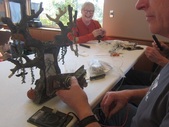 Get free, guided assistance from handy volunteers on disassembling, troubleshooting and repairing small household appliances, clothing, electronics, mobile devices and more at a Fix-It Clinic. Upcoming Fix-It Clinics are scheduled for the following dates and locations:
|
- Sunday, December 11 from noon to 4 p.m. at the Grace Center for Community Life in northeast Minneapolis
- Saturday, January 14 from noon to 4 p.m. at the Ridgedale Library in Minnetonka
- Sunday February 12 from noon to 4 p.m. at Arc’s Value Village in New Hope
Volunteer fixers who have skills in electrical, mechanical or electronics repair, wood working, sewing or general tinkering are essential to making the clinics successful.
For more information or to volunteer, contact Nancy Lo at nancy.lo@hennepin.us or 612-348-9195.
From Thanksgiving to New Year’s Day, residential waste increases by more than 25 percent. But the holidays don’t have to be a time to waste. You can simplify your life, save money, and reduce waste all by re-examining your gift-giving habits and making some changes.
Give lower-waste gifts
When choosing gifts and how to present them, become conscious of the materials you are buying. Can you recycle, compost, reuse or donate the items when you're done with them?
When shopping for gifts, keep the following gift-giving philosophy in mind: buy "something they want, something they need, something to wear, or something to read."
Resist the urge to buy cheaply made items, and instead spend your money on gifts that will last. Another option is to look in secondhand stores before buying new, or even re-gifting something you no longer use.
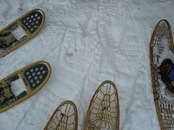 Or, consider replacing some gifts of "stuff" altogether by giving gifts of experiences. Giving experiences prevents waste and creates more lasting memories and happiness than material goods. Consider trying an activity like ice fishing or snowshoeing, giving tickets to a play or sports event, going to a new or favorite restaurant, or giving a membership to a museum. Check out the Minnesota Pollution Control Agency’s list of 50 experiences you can give for ideas.
Go green with gift wrap
|
 |
|
Gift wrap is generally not recyclable, so it’s important to reconsider how you package your presents.
Some alternative ideas include:
|
- Reuse paper that you already have or choose recycled-content and recyclable paper.
- Get rid of disposables and opt for reusable gift bags, fancy boxes, or decorative fabric instead.
- Create gift tags by cutting up and repurposing old greeting cards.
See the giving green gifts environmental education activity for more ideas and instructions.
Hold green celebrations
Good food makes for a great holiday! But be sure to take steps to prevent food waste by planning in advance, checking your refrigerator and cupboards to use up what you already have first, and making a plan for leftovers. Learn more.
Consider what you will be using to serve food and drink and to decorate. Purchase or make reusable banners, table clothes, centerpieces and other decorations, and use reusable cups, plates, utensils and napkins. See the green party checklist for more ideas.
Find green disposal options
When you’re cleaning up from the holidays, be sure to find the best recycling or disposal option for your string lights, tree, old electronics and more. Search the Green Disposal Guide for options.
|